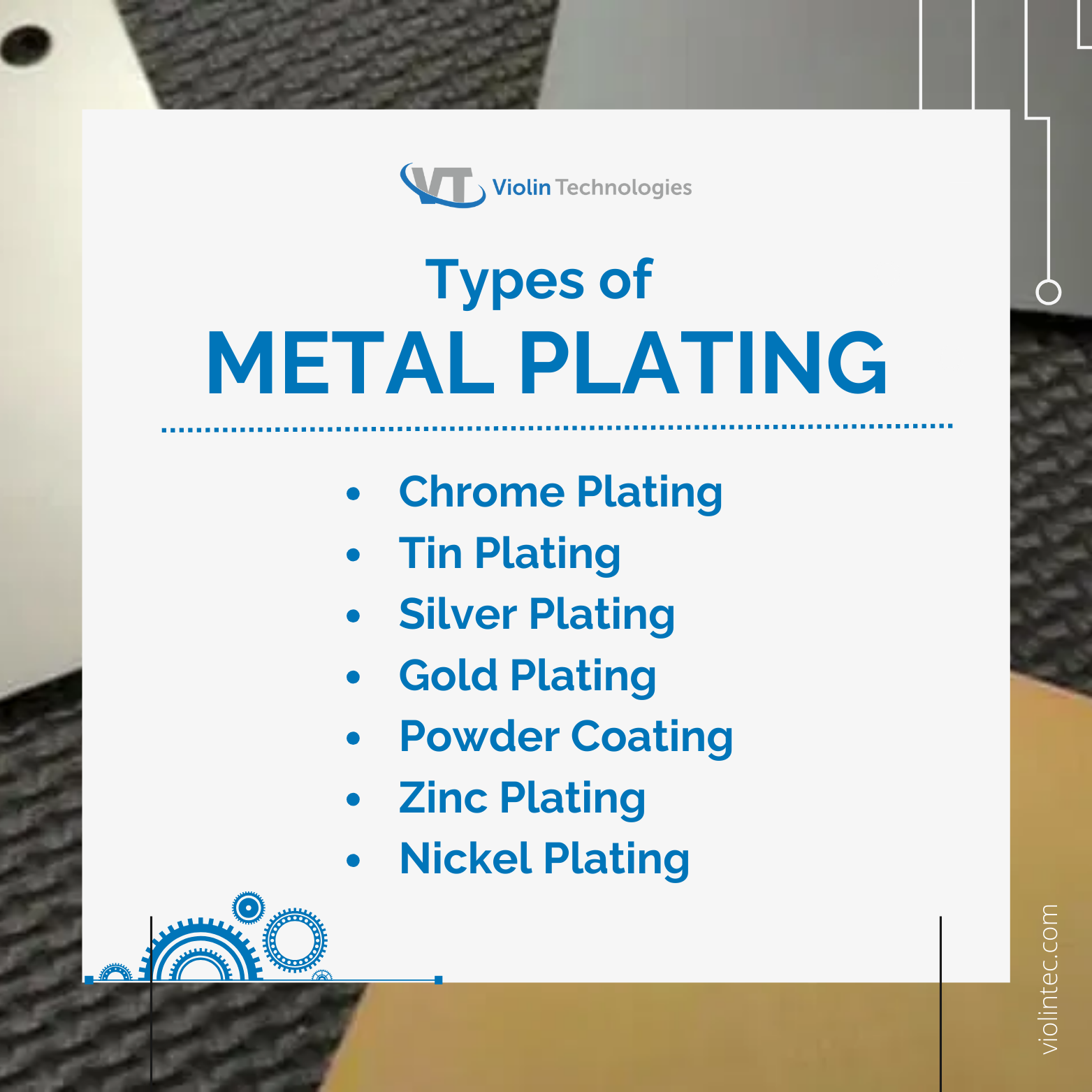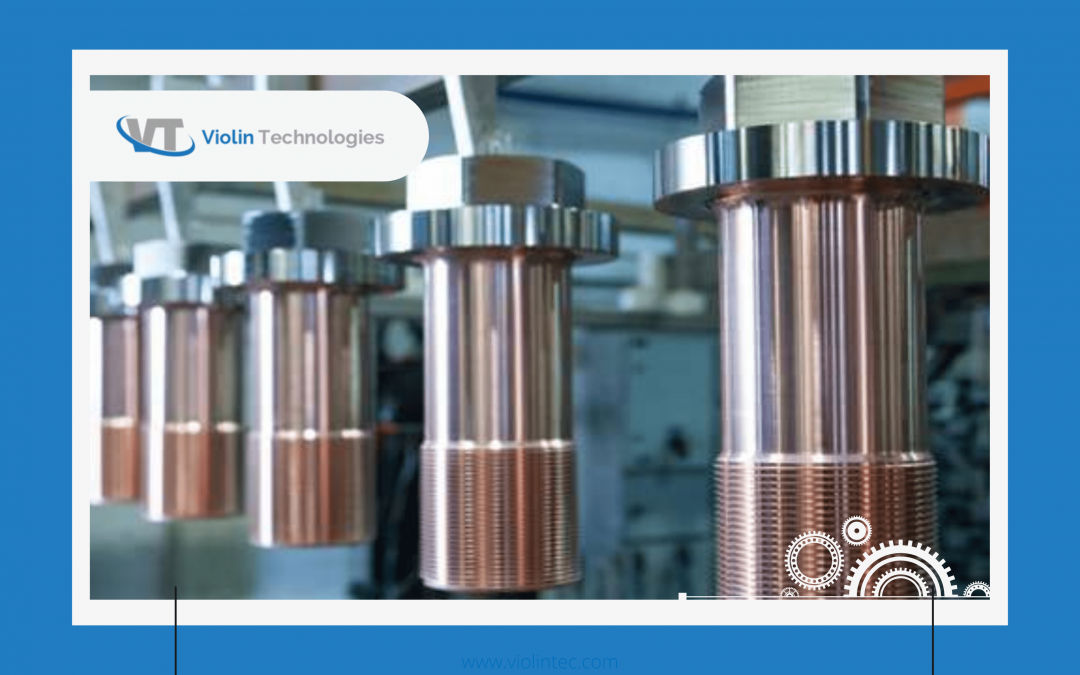Sheet metal stamped parts play a crucial role in industries like automotive, electronics, aerospace, and medical devices. It seems sheet metal parts fulfill particular functional and aesthetic needs; these parts frequently receive metal plating. This process entails applying a thin metal layer onto the surface of the sheet metal parts to enhance their performance and durability.
Metal plating is a critical process in the production of sheet metal stamped parts and aluminum components, providing enhanced properties such as corrosion resistance, electrical conductivity, and wear resistance. This comprehensive guide will examine different varieties of sheet metal plating, their applications, benefits, and processes of this essential manufacturing technique.
What we cover in this blog?
Types Of Metal Plating
The contract manufacturing company in Chennai provides specialized services tailored to sheet metal materials to meet various production requirements. The choice of plating material depends on the desired properties and the application of the sheet metal part. Here are some of the most commonly used plating materials:
Chrome Plating
Chrome plating involves coating the surface with metal finish parts with a thin layer of chromium. This type of plating is known for its exceptional corrosion immunity, hardness, and shiny appearance. Chrome plating finds extensive application in the automotive sector for both aesthetic enhancements and functional uses, including bumpers, grilles, and trim.
Tin Plating
Tin plating offers excellent corrosion immunity and solderability, making it ideal for electronic components. This plating provides a smooth, corrosion-resistant surface that protects against oxidation and galvanic corrosion, ensuring the longevity and reliability of electronic devices.
Silver Plating
Silver plating is chosen for its high electrical conductivity and light reflection finish. It is frequently employed in electronic and electrical components, such as connectors and circuit boards, where efficient signal transmission and corrosion resistance are essential.
Gold Plating
Gold plating provides superior corrosion resistance and excellent electrical conductivity. It is often used in high-reliability applications, such as connectors and contacts in electronic equipment, due to its resistance to oxidation and tarnishing.
Powder Coating
It is a dry finishing technique where a powder material is applied to a metal surface and then cured under heat. This method has been extensively adopted in the automotive industry and for aluminum alloys because of its attractive appearance and effective protection.
Zinc Plating
This is a widely used and cost-effective option that offers excellent anti-corrosion. A chromate conversion coating for additional protection often follows zinc plating.
Nickel Plating
This provides a bright, aesthetically pleasing finish while also enhancing corrosion resistance and wear resistance. Nickel plating is often used as a base layer for chrome plating.

Metal Plating Methods
The selection of the plating method depends on factors like the type of precious metal part being plated, the size and shape of the parts, and the production volume. There are several essential metal plating methods for sheet metal stamped parts, ensuring optimal durability and performance. Here are some common metal plating methods:
Electroplating
Electroplating is a commonly employed method where metal ions are deposited onto a component’s surface from an electrolytic plating solution by utilizing an electric current. The part to be plated serves as the cathode, and the layer of metal used to be deposited acts as the anode. This process is widely used for its ability to produce uniform and controlled thicknesses of metal layers.
Barrel Plating
Barrel plating is an efficient and cost-effective method for plating small parts in large quantities. Parts are placed in a rotating barrel containing the plating solution. As the barrel rotates, the parts tumble and receive a thin layer of metal coating, making this method ideal for high-volume production of small, precision-stamped parts.
Rack Plating
Rack plating is used for larger parts or those requiring precise control over the plating thickness. Parts with gold plating are attached to racks and immersed in the plating solution. This method ensures uniform coverage and is ideal for parts with complex geometries or sharp edges.
Spot Plating
Spot plating is a selective plating process used to coat specific areas of a part. This post-plating technique is often employed when only certain regions of the part need to be enhanced electrical conductivity.
Conversion Coating
It involves a chemical reaction between the metal’s surface and the coating solution, forming a protective layer that enhances corrosion protection. This method is commonly used for aluminum parts to make corrosion resistant and improve adhesion for subsequent painting or powder coating.
Sheet Metal and Stamped parts suppliers are crucial in providing vital components across various industries. When seeking a reliable manufacturer for your next project, it is prudent to contact several suppliers specializing in sheet metal and stamped parts. This approach enables effective comparison of quotes and assessment of their capabilities.
Factors For The Metal Plating Process
Contract manufacturers in India offer diverse capabilities and cost-effective solutions for outsourcing production needs. Multiple factors impact the choice of the most appropriate sheet metal and plating methods for a specific application:
Desired Properties: Consider the primary function of the plated part. It is either for anti-corrosion, electrical conductivity, or aesthetics. Each plating method and metal offers distinct advantages.
Material Compatibility: Ensure the plating raw materials adhere well to the base metal of the sheet metal part and don’t cause any adverse reactions. Incompatible pairings can lead to peeling, flaking, or even corrosion of the base metal.
Part Size and Shape: The plating method needs to be suitable for the size and complexity of the sheet metal parts. Rack and barrel plating may not be ideal for parts with intricate geometries, while spot plating offers greater control for targeted areas.
Production Volume: For high-volume production, automated methods like rack or barrel plating offer efficiency. Lower volumes may benefit from manual spot plating or electroless plating, depending on the part complexity and desired properties.
Environmental Regulations: Certain plating processes involve hazardous chemical resistance, requiring adherence to environmental regulations regarding waste disposal. Choose methods with environmentally friendly options or proper material waste management practices to minimize environmental impact.
Conclusion
Metal plating is a versatile and essential process in the sheet metal fabrication of stamped parts. By comprehending the various types of precious metal plating, along with their advantages and the associated methods, manufacturers can choose the optimal plating material and process to improve their products’ performance, durability, and aesthetics. Whether it’s improving corrosion resistance for automotive components or ensuring high electrical conductivity for electronic parts, metal plating offers a range of solutions to meet the diverse needs of various industries.
Frequently Asked Questions
How does metal plating improve corrosion protection?
Metal plating improves corrosion protection by creating a barrier between the underlying metal and environmental elements such as moisture, chemicals, and oxygen. This barrier prevents oxidation and chemical reactions that can cause rust and corrosion on the metal’s surface.
Can metal plating be applied to all types of sheet metal alloys?
No, not all sheet metal alloys have ideal compatibility for every type of sheet metal finish plating.
What are some limitations of metal plating?
Metal plating processes can involve environmental concerns, cost variations, material compatibility issues, and challenges with complex part geometries.
How long does the plating process take?
The duration of the plating process depends on the type of metal being plated, the thickness of the coating, and the size of the components. Typically, it can range from a few hours to several days.

Rasmita Patro
About the Author
Meet Rasmita Patro, a content writer, a former teacher, and a former HR with a passion for storytelling, creating compelling content that engages and informs readers. She has a Master’s in Economics and an MBA degree in Human Resources. Her expertise spans a variety of industries, including finance, healthcare, technology, and others. She has a particular inclination toward crafting blog posts, articles, and social media content that resonates with the target audience. She loves reading different genres of books, love to experiment with cooking, and listening to soothing music.

